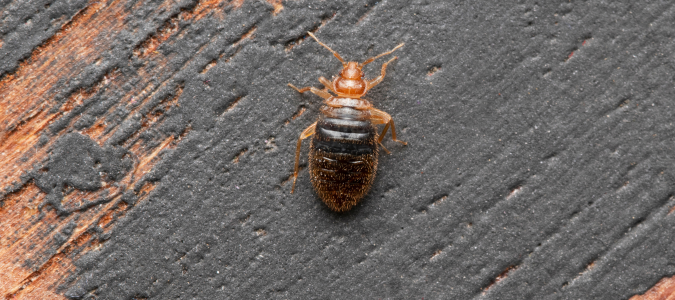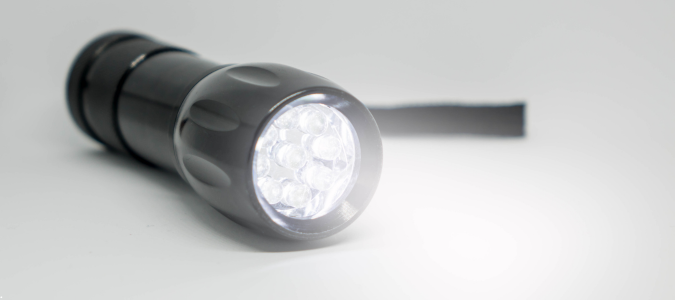Bed bugs are frustrating pests that can disrupt your sleep and quality of life. Unfortunately, they’re also resilient pests that can survive in harsh conditions.
Can Bed Bugs Live In Cold Temperatures?
It’s common knowledge that bed bugs can’t survive in extreme heat, but what happens to these pests in cold weather? Can bed bugs live in cold temperatures?
Bed bugs are resilient pests that can live in cold temperatures to a certain point. They can survive in cold weather as low as 46 degrees Fahrenheit. Adult bed bugs are particularly resilient and can survive in many conditions.
Bed bugs prefer to live indoors where they have shelter and access to a host for their blood meals, so the cold weather is not a massive threat to their survival. They are especially safe in heated homes when the weather is cold. Contrary to popular belief, bed bugs do not hibernate but enter a state called “diapause” when faced with cold conditions.
Bed bug infestations can sometimes increase during the winter months due to increased human travel, which facilitates their spread.
However, if the temperatures dip below 46 degrees, bed bugs will begin to struggle. How long do bed bugs live in the cold?
They can survive for a few days in freezing weather, so a brief cold snap is likely not enough to get an entire bed bug population under control. It’s important for homeowners to understand that relying on freezing temperatures is not enough to control a bed bug infestation. That being said, you can use the cold to your advantage in a few ways.
First, you can place small bed bug-infested items, such as clothing or light bedding, in a sealed plastic bag in the freezer. Leave the items in a freezer at zero degrees Fahrenheit for at least four days.
You can also try placing the bed bug-infested items outdoors in the winter. For this method to work, the temperatures must remain below freezing for a few days. The benefit is that you can place bigger items, such as furniture, outdoors.
Why Professional Pest Control Works
The most effective way to control bed bugs in your home is to take a multi-pronged approach and partner with a pest control service.
It’s important to remember that while cold weather may reduce a bed bug population, it’s often not enough to control it entirely. You need to take other approaches, such as using heat and professional treatments, to attack the bed bug infestation in your home.
Bed bugs are frustrating pests that can disrupt your sleep and peace of mind. If you suspect that there are bed bugs in your home, do not hesitate to contact a professional pest control service.
Do I Have to Throw Away My Clothes if I Have Bed Bugs?
Controlling bed bugs can be a stressful process. Along with dealing with infested bedding and furniture, homeowners must also consider their clothing. It’s normal to wonder if you have to throw away your clothes if you have bed bugs.
The good news is that you do not have to throw your clothes away, even if there are bud bugs on them. Instead, you can dry them on the highest heat setting.
Next, it’s important to store your clothes in a sealed plastic bag or storage container with an airtight lid. Without oxygen, all remaining bed bugs will not be able to survive. Keep the sealed clothing in a room away from the bed bug infestation until the problem is dealt with. This will help prevent the chance of re-infestation.
Keep in mind that dealing with a bed bug infestation almost always requires expert intervention. A pest control professional can take care of the problem and let you know when it’s safe to bring your clothes back into your bedroom or other rooms that were infested with bed bugs.
Protecting Your Clothes from Bed Bugs
Once the bed bugs are gone, homeowners should take measures to protect their clothing from another infestation. This is the final step in protecting your clothes from these unwelcome pests.
First, store your clothes properly in dresser drawers or your closet. Avoid leaving clothes on your bedroom floor, on the bed or on upholstered furniture. If these areas are infested with bed bugs, they will easily find their way to your clothing.
If you like to buy secondhand clothing, make sure you inspect your items thoroughly before bringing them into your home. Bed bugs often hitch a ride to their next home on clothing or in suitcases. Dry all secondhand clothing at the highest heat setting before adding it to your closet.
When traveling, inspect the bed for bed bugs and keep your suitcases away from the bed and other furniture as much as possible. Use luggage racks whenever possible to keep your items off the floor. This will reduce the likelihood of carrying bed bugs into your home.
Following all of these steps will not only preserve your clothing but can help protect you from bed bug bites. How long do bed bug bites last? They typically last for one to two weeks and should go away on their own. However, bites are an indication of a bed bug infestation.
Bed bugs are resilient pests that are difficult to get rid of on your own. While drying your clothing with heat can go a long way, it does not deal with the full problem. A pest control provider can find all of the bed bug hiding spots in your home and use professional-grade treatments to control them.
How to Check For Bed Bugs With a Flashlight
It’s a good idea for homeowners to learn how to check your bed for bed bugs. The earlier you can identify an infestation, the easier it will be to control them.
Since bed bugs often hide during the day and emerge while you sleep, they’re difficult to spot on your own. Using a flashlight to check for bed bugs can help you spot them in dark cracks and gaps, or on dark surfaces.
Bed bugs are small pests that are dark-colored and have flat bodies. They’re easy to miss, but there are a few common bed bug hiding spots that you should pay special attention to. First, they’re often found around mattresses and box springs.
Check carefully around the seams of your mattress, under tags and in any small crevices around your bed. Next, inspect your headboard and bed frame. Bed bugs can be found hiding in the screw holes, joints and cracks of your furniture.
Upholstered furniture is also appealing to bed bugs. With your flashlight, look for them around the seams of your chairs and couches. If you have an upholstered headboard, check the back side of it, too.
Bed bugs could be hiding out in cracks in your walls or along your baseboards. Inspect these areas closely with a flashlight. To prevent future infestations, seal up any cracks you find to reduce their hiding spot opportunities.
Finally, if you recently traveled, inspect your suitcases and clothing for bed bugs. You may even spot these pests on your zippers. Dry them on high heat before adding them back to your closet.
If you spot bed bugs in any of these locations, contact a pest control specialist. The experts have the right tools and experience needed to control a bed bug infestation.
Control Bed Bugs With the Help of a Pest Control Professional
Bed bugs are a homeowner’s worst nightmare, and they’re difficult to get rid of on your own. The best course of action is to contact a local pest control service.
ABC Can Bring Your Whole Family Relief From Bed Bugs
Homeowners who have a bed bug problem agree that it can significantly alter your normal routine and have a negative impact on your mental health. Take your life back from these pests by contacting ABC Home & Commercial Services. We offer pest control solutions to all types of pest problems, so you can get some relief.



